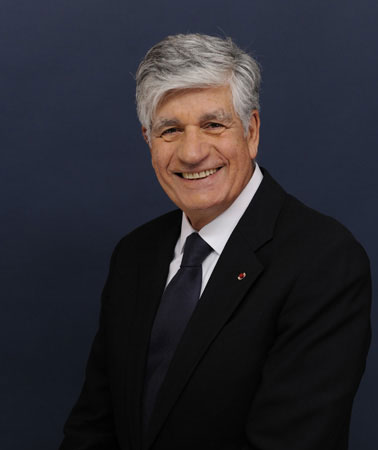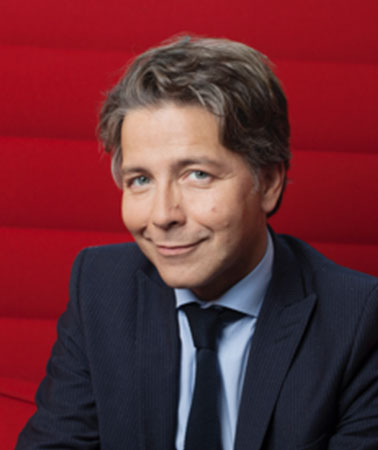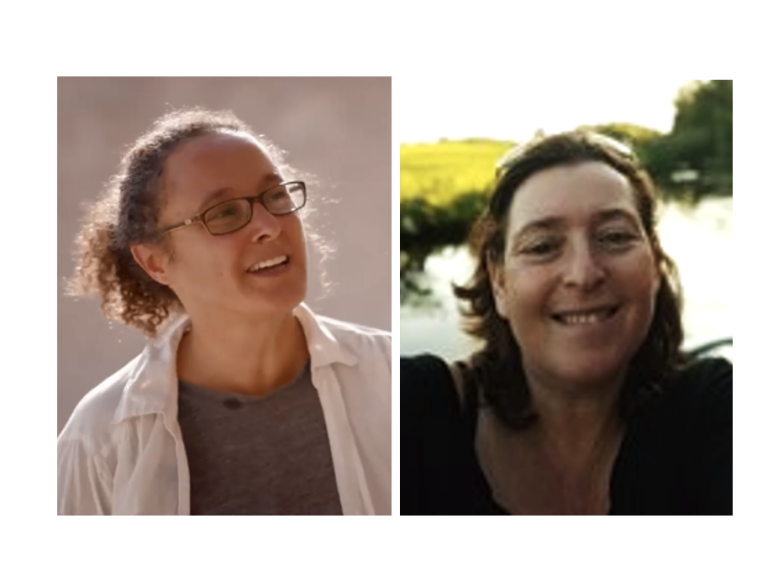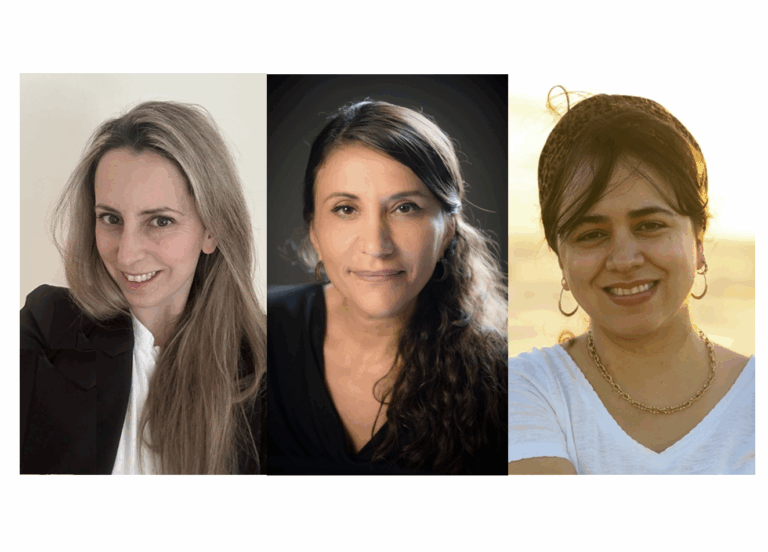Simone Veil et Robert Parienti, initiateurs du conseil Pasteur – Weizmann (Israël)

[:fr]« Le Conseil Pasteur-Weizmann est le symbole même d’une concertation au plus haut niveau entre scientifiques pour l’amour de la science et pour le bien de l’homme, au-delà des frontières« , Simone Veil. Le 9 décembre 1974, Robert Parienti, Délégué Général de l’Institut Weizmann pour l’Europe, était reçu par le Ministre de la Santé, Madame Simone Veil. Au cours de cette entrevue, où fut évoqué l’isolement des chercheurs israéliens, Mme Veil émit pour la première fois l’idée d’un jumelage entre l’Institut Pasteur et l’Institut Weizmann. Elle assura Robert Parienti de son soutien actif à Pasteur et à Weizmann pour le cas où cette idée serait retenue. Quelques semaines plus tard, André Lwoff se rendit à l’Institut Weizmann en compagnie de Robert Parienti. C’est dans l’avion qui les emmenait vers Israël que naquit l’idée d’associer officiellement l’Institut Pasteur et l’Institut Weizmann dans la lutte contre le Cancer, une action incontestable, placée hors de portée de toute critique sectaire ou politique.
Cette idée fut accueillie avec enthousiasme par les Directeurs des deux instituts, Michael Sela (Institut Weizmann) et Jacques Monod (Institut Pasteur). Avec un courage peu commun dans le contexte politique de l’époque Mme Veil, alors Ministre de la Santé, accepta d’entrée de jeu de devenir Président d’Honneur du Conseil Pasteur-Weizmann. Elle n’a depuis jamais ménagé son temps et ses efforts pour apporter à cette institution un soutien constant, sans lequel Pasteur-Weizmann n’aurait sans doute pas survécu à l’enthousiasme des premiers instants.
La création du « Conseil Pasteur-Weizmann pour la Lutte contre le Cancer » fut annoncée le 28 mars 1975 au cours d’une conférence de presse présidée par Mme Simone Veil et par Jacques Monod, orchestrée par Léon Zitrone et diffusée en direct par l’ORTF.
Depuis, plus de 35 ans ont passé. Et la collaboration Pasteur-Weizmann continue de se développer dans le cadre d’une organisation rigoureuse et grâce à l’existence d’un soutien financier spécifique. Aujourd’hui le conseil Pasteur Weizmann est présidé par Maurice Lévy.

Le Directeur général du Comité Français est David Weizmann.

Situé au cœur d’une orangeraie, à une vingtaine de kilomètres de Tel-Aviv et une cinquantaine de Jérusalem, l’institut Weizmann des Sciences est, par sa taille, le nombre de ses chercheurs, son budget, comparable à l’Institut Pasteur. Sa structure de financement est, elle aussi, similaire à celle de l’Institut Pasteur. Institut indépendant, il bénéficie d’une aide de l’État, d’un puissant réseau de donateurs, de ressources propres et de revenus industriels. Et comme l’Institut Pasteur, il est impliqué dans des enseignements de haut niveau. A la différence de l’Institut Pasteur, ses activités concernent aussi la physique, les mathématiques et l’environnement, même si près des deux tiers de ses laboratoires s’intéressent essentiellement à la biologie, avec en particulier une « force de frappe » importante dans les domaines du cancer, de l’immunologie cellulaire et des neurosciences.
L’Institut Weizmann a acquis une notoriété internationale qui le situe parmi les plus prestigieux centres de recherche au monde.
Ses chercheurs entretiennent des collaborations avec de nombreux laboratoires en dehors d’Israël, en particulier aux Etats-Unis et en Allemagne. Grâce à « Pasteur-Weizmann » ces collaborations s’étendent désormais à l’Institut Pasteur.
Activités scientifiques
1- Projets de recherche collaborative Pasteur-Weizmann
Le Conseil Pasteur-Weizmann soutient des projets de recherche impliquant chacun au moins un laboratoire de l’Institut Pasteur et un laboratoire de l’Institut Weizmann. Chaque projet retenu reçoit, pendant deux années successives, une subvention annuelle de 70.000 € par an à répartir également entre les laboratoires concernés. Les projets, soumis en réponse à un appel d’offre annuel, sont expertisés et classés par deux comités d’experts (un dans chaque institut). Sur la base de l’avis de ces comités, le Président du Conseil Scientifique de Pasteur-Weizmann, assisté des deux coordinateurs scientifiques, sélectionne chaque année deux à trois nouveaux projets. A ce jour, 43 projets ont été financés par Pasteur-Weizmann.
2- Les échanges de visiteurs Pasteur-Weizmann
Chaque année trois à quatre chercheurs de chaque institut séjournent, aux frais de Pasteur-Weizmann, pendant une semaine dans l’institut partenaire pour s’y faire connaître (conférence, séminaire, tables rondes) et y visiter les laboratoires avec lesquels ils seraient susceptible d’interagir. Ces visites de laboratoires et les contacts avec les chercheurs sont organisés par un hôte local qui prend le visiteur en charge pendant son séjour.
3- Les Symposia Pasteur-Weizmann
Tous les deux ans, en alternance à Pasteur et à Weizmann, le Conseil Pasteur-Weizmann organise un symposium sur un thème spécifique. Il réunit une trentaine de chercheurs, principalement des deux instituts, pour y présenter leurs travaux et perspectives.
4- Les projets collaboratifs multinationaux
Depuis 2001, le Conseil Pasteur-Weizmann cherche à élargir ses programmes de recherche collaborative à d’autres instituts d’excellence européens. Un premier programme de recherches sur le développement de nouvelles molécules anticancéreuses dérivées de l’acide rétinoïque a été lancé entre l’Institut Pasteur, l’Institut Weizmann et l’Institut Mario Negri (Milan – Italie).
5- Les enseignements doctoraux
Un accord a été conclu en 2002 entre l’Institut Pasteur, l’Institut Weizmann et le Conseil Pasteur-Weizmann pour l’échange d’enseignants de haut niveau et d’étudiants dans le cadre des enseignements spécialisés de niveau pré-doctoral (équivalent aux DEA et thèses dans le système français) et post-doctoral dispensés au Département des Enseignements de l’Institut Pasteur et à la Feinberg Graduate School de l’Institut Weizmann.
Allocations de recherche
Allocations post-doctorales
Chaque année depuis 2002, deux allocations post-doctorales sont disponibles pour assurer l’accueil dans chacun des instituts de jeunes scientifiques issus de l’institut partenaire ayant acquis leur doctorat depuis moins de 6 ans. Ce programme a pour but de favoriser l’implication des jeunes chercheurs dans la collaboration Pasteur-Weizmann.
Structure administrative et Organisation
Le Conseil Pasteur-Weizmann est une association de type « Loi de 1901 », statutairement indépendante de l’Institut Pasteur et de l’Institut Weizmann. Elle a pour objet de collecter des fonds qui seront reversés à parts égales aux deux instituts bénéficiaires pour servir à favoriser la collaboration de chercheurs des deux instituts dans la recherche contre le cancer.
Le Conseil d’administration :
Le Conseil Pasteur-Weizmann est dirigé par un Conseil d’Administration nommé par une Assemblée Générale, elle-même constituée de donateurs et de personnalités réputées pour leurs compétences administratives, scientifiques ou financières. Il est renouvelable par moitié tous les trois ans et élit son Président parmi ses membres.
Le Conseil Scientifique :
Le Conseil d’Administration s’appuie pour ses décisions scientifiques sur un Conseil Scientifique constitué de 9 membres: 4 chercheurs de l’Institut Pasteur et 4 chercheurs de l’Institut Weizmann nommés par le Conseil d’Administration sur proposition des Directeurs des deux instituts, et d’un Président nommé par le Conseil d’Administration. Le mandat des 8 chercheurs est de 6 ans, celui du Président de 3 ans. Le Conseil est renouvelable par moitié tous les 3 ans.
Les Comités d’Experts :
Dans chacun des deux instituts, un comité d’experts est nommé par le Directeur. Il a pour tâches :
- d’évaluer et de classer les projets de recherche collaborative Pasteur-Weizmann déposés en réponse à l’appel d’offres. Les classements réalisés indépendamment par les deux comités d’experts sont transmis au Président du Conseil Scientifique qui, en concertation avec les coordinateurs scientifiques (voir ci-dessous), choisit sur cette base les projets qui seront soutenus.
- d’établir la liste des scientifiques de son institut qu’il propose pour une visite de l’institut partenaire.
- de choisir sur la liste proposée par l’autre institut les chercheurs qui viendront visiter son institut, et de nommer pour chaque visiteur un « parrain » chargé d’organiser et de suivre la visite de l’invité.
Les Coordinateurs Scientifiques :
Le Directeur de chacun des deux instituts nomme un « coordinateur scientifique » chargé de jouer, au sein de son propre institut, le rôle d' »interface » entre les chercheurs, la Direction et le Comité d’experts de son institut d’une part et le Conseil Pasteur-Weizmann (Conseil Scientifique, Conseil d’Administration) d’autre part.
Conseil Pasteur-Weizmann[:en]« The Pasteur-Weizmann Council is the mere example of a dialogue at the highest level between scientists for the love of science and for the good of mankind, beyond frontiers. » Simone Veil.
Located in the heart of an orange grove, some twenty kilometers from Tel-Aviv and fifty from Jerusalem, the Weizmann Institute is comparable to Institut Pasteur in size, number of researchers, and budget. Its financial structure is also similar to that of Institut Pasteur. As an independent institute, it benefits from Government funds, from an extensive donor network, from revenues of its own assets and from industrial royalties. Also, just like Institut Pasteur, it is involved in top-level education and training. Unlike Institut Pasteur, however, its activities also include physics, mathematics and environment science, although nearly two-thirds of its laboratories are dedicated to biology, with a significant « strike force » in the areas of cancer, cellular immunology and neuroscience.
The Weizmann Institute has acquired an international reputation, placing it among the most prestigious research centers in the world.
Its researchers work closely with a number of laboratories outside of Israel, in particular in the United States and Germany. With « Pasteur-Weizmann », these external collaborations now also extend to Institut Pasteur.
Pasteur-Weizmann Scientific Initiatives
1- Pasteur-Weizmann Collaborative Research Projects
The Pasteur-Weizmann Council supports research projects that involve at least one Institut Pasteur laboratory and one Weizmann Institute laboratory. Each selected project receives an annual sum of €70,000 during two years, to be shared equally between the laboratories. The projects, which are submitted in response to an annual call for applications, are assessed and classified by two committees of experts (one from each Institute). Based on these committees’ opinions, the Chairman of the Pasteur-Weizmann Scientific Council, together with two scientific coordinators, selects two to three new projects every year. Thus far, 43 projects have received financial support from Pasteur-Weizmann.
2- Pasteur-Weizmann Exchanges
Every year, three to four researchers from each Institute spend a week at the partner Institute, at Pasteur-Weizmann’s expenses, in order to become better-known (for example, through conferences, lectures and round table meetings) and to visit laboratories that they are likely to interact with. These laboratory visits and meetings with researchers are organised by a local host, who takes in the visitor during his time at the Institute.
3- Pasteur-Weizmann Symposia
Every other year, the Pasteur-Weizmann Council organises a symposium on a specific topic, to be held in turn at Institut Pasteur or the Weizmann Institute. These symposia bring together around thirty researchers, mainly from the two Institutes, to present their research and future plans.
4- Multinational collaborative projects
Since 2001, the Pasteur-Weizmann Council has sought to extend its collaborative research programmes to other European Institutes of Excellence. One research programme on the development of new anticancer molecules derived from retinoic acid has been launched by Institut Pasteur, the Weizmann Institute and the Istituto Mario Negri (Milan, Italy).
5- Doctoral Training
In 2002, an agreement was signed by Institut Pasteur, the Weizmann Institute and the Pasteur-Weizmann Council on the exchange of top-level researchers and students as part of the pre-doctoral (DEA- and thesis-level in the French system) and post-doctoral specialised training provided at the Institut Pasteur Education and Training Department and the Weizmann Institute Feinberg Graduate School.
Post-doctoral grants
Every year since 2002, two post-doctoral grants are available to ensure reception in each of the institutes of young scientists from the partner institute having completed their doctorate within the last 6 years. This program aims to encourage the involvement of young researchers in the collaboration Pasteur-Weizmann.
History and organisation of Pasteur-Weizmann
A brief history
On 9 December 1974, Robert Parienti, Delegate General to Europe for the Weizmann Institute, met with the French Minister of Health, Mrs Simone Veil. During this meeting, where the isolation of Israeli researchers was discussed, Mrs Veil put forward the idea of a partnership between Institut Pasteur and the Weizmann Institute for the first time. She assured Robert Parienti of her active support if the idea were approved by both Institut Pasteur and the Weizmann Institute. Several weeks later, André Lwoff visited the Weizmann Institute together with Robert Parienti. It was in the plane to Israel that the idea of officially associating Institut Pasteur and the Weizmann Institute in cancer research was born. The fight against cancer, an indisputable initiative, was to be above all sectarian and political criticism.
This idea was greeted with much enthusiasm from the heads of both Institutes: Michael Sela (Weizmann Institute) and Jacques Monod (Institut Pasteur). With a rare kind of courage in the political climate of the times, Mrs Veil, Minister of Health at the time in France, agreed without hesitation to become Honorary Chairman of the Pasteur-Weizmann Council. Since then, she has spared no effort and has given generously of her time, without which Pasteur-Weizmann would no doubt not have made it past the first moments of enthusiasm.
The creation of the « Pasteur-Weizmann Council for Cancer Research was announced on 28 March 1975 at a press conference led by Mrs Simone Veil and Prof Jacques Monod, organized by Léon Zitrone and broadcast live by ORTF.
More than 35 years have elapsed. The Pasteur-Weizmann partnership has continued to expand with a strong framework, thanks to specific financial backing.
Administrative and Organizational Structure
The Pasteur-Weizmann Council is a non-profit association, legally independent of Institut Pasteur and the Weizmann Institute.
Its objective is to raise funds to be distributed equally to the two Institutes in order to encourage the collaboration of researchers from both Institutes in cancer research.
Board of Directors :
The Pasteur-Weizmann Council is headed by a Board of Directors who are appointed at the Annual General Assembly, itself composed of donors and persons known for their administrative, scientific or financial expertise. The Board of Directors is renewed by half every three years. The Board elects its Chairman from amongst its members.
Scientific Council :
The Board of Directors bases its scientific decisions on the advice of the Scientific Council. The Scientific Council is made up of 9 members: 4 Institut Pasteur researchers and 4 Weizmann Institute researchers, each of whom are appointed by the Board of Directors on recommendation of the Heads of both Institutes, and a Chairman appointed by the Board of Directors. The 8 researchers serve a 6 years term, while the Chairman serves a 3-year term. Half the members of the Council are renewed every 3 ans.
Committees of experts :
The Head of each Institute appoints a committee of experts whose responsibilities include:
- evaluating and classifying Pasteur-Weizmann collaborative research projects that have been submitted in response to a call for applications. The classifications are carried out independently by the two expert committees and are sent to the Chairman of the Scientific Council who, together with the scientific coordinators (see below) selects the final projects.
- drawing up the list of scientists from its Institute who will visit the partner Institute.
- choosing which researchers from the other Institute’s list will visit its Institute, and appointing a « mentor » in charge of accompanying the visitor and organizing his/her time at the partner Institute
Scientific Coordinators :
The Head of each Institute appoints a « scientific coordinator » to act as an interface in his own Institute between a) the researchers, General Management and the Committee of Experts at his Institute and b) the Pasteur-Weizmann Council (i.e. Scientific Council, Board of Directors).[:]






